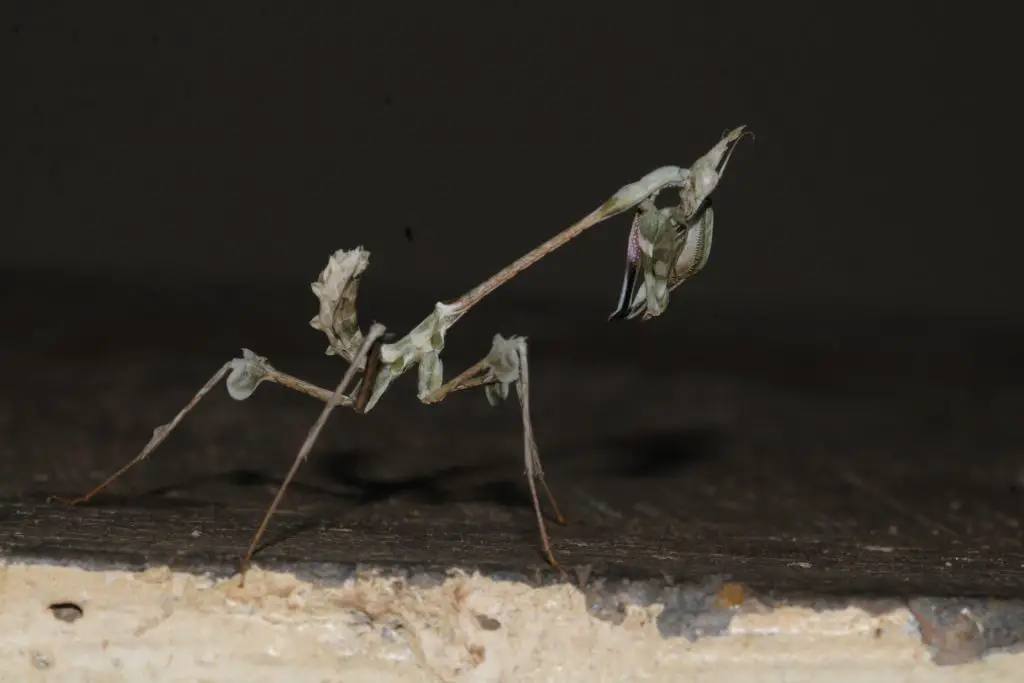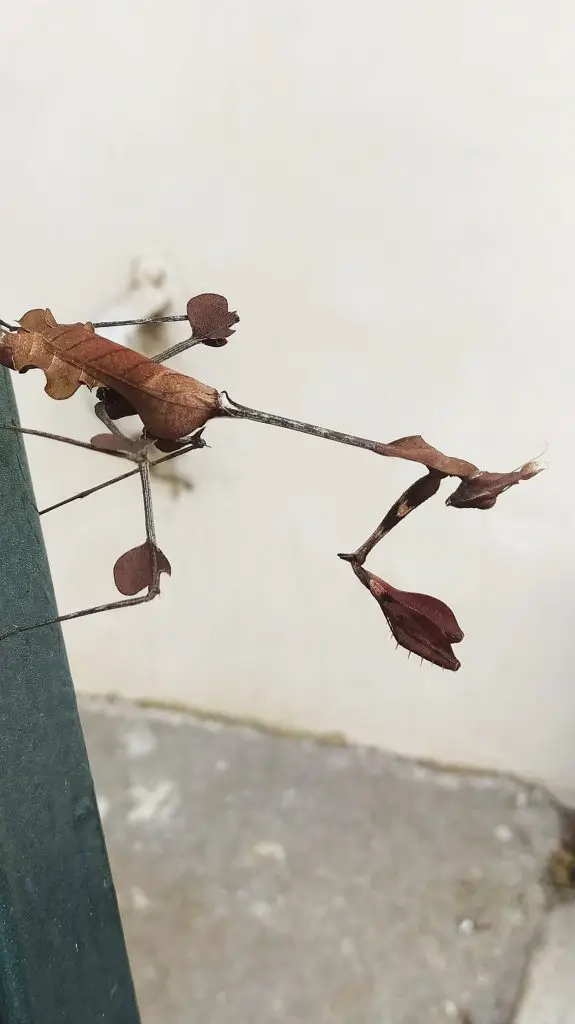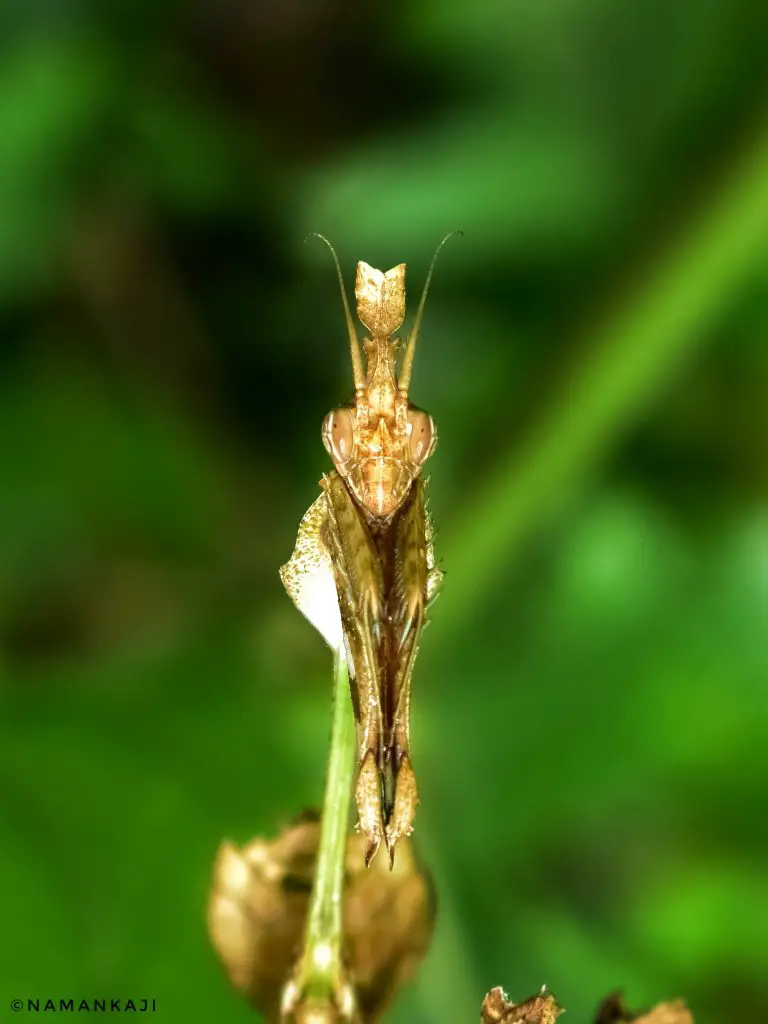Meet Gongylus gongylodes, the Wandering Violin Mantis – a peculiar and intriguing mantis species that imitates leaves and branches to perfection. With their specialized diet of flying insects and preference for hot and dry habitats, these skilled hunters are truly captivating. Let’s delve into the fascinating world of this unique mantis species!

General Description
The Gongylus gongylodes, commonly known as the Wandering Violin Mantis, is a fascinating and peculiar mantis species belonging to the Genus Gongylus. These mantids have evolved to imitate leaves and branches, making them appear like natural elements in their surroundings. This unique adaptation not only aids in camouflage but also serves as a clever strategy for ambushing their prey.
As specialized predators, Gongylus mantids primarily feed on flying insects. Their food preferences have led them to belong to the Empusidae family, which sets them apart from some other mantis species that may have a broader diet. Due to this specialization, Gongylus mantids are not equipped to climb glass surfaces like some other mantis species.
One intriguing aspect of Gongylus mantids is their relatively docile nature, making it possible to keep them together, even when they reach adulthood. However, for breeding purposes, it is advisable to separate the female mantids. Despite their peaceful demeanor, these mantids are skilled hunters and proficient at catching flying insects, owing to their impressive agility and stealth.
The color variations among Gongylus gongylodes individuals include several shades of brown and green, which add to their aesthetic appeal and further assist in their camouflage amidst the foliage.
The Latin name for this species is Gongylus gongylodes, and they belong to the Super-Order Dictyoptera, Order Mantodea, and Family Mantidae. Within the Mantidae family, they are categorized under the Subfamily Empusinae and Tribe Empusini.
Natural Habitat
Gongylus gongylodes is native to several regions, including India, Sri Lanka, Java, Myanmar, Thailand, and Bhutan. They predominantly inhabit bushes in hot, dry, and sunny locations, where they can efficiently pursue their prey.
Gongylus mantids predominantly inhabit bushes located in dry and hot environments. Their preferred habitats include places with plenty of sunlight and arid conditions. These mantids are well-adapted to thrive in such settings, and their appearance further complements their surroundings, allowing them to blend in effortlessly.
Nymphs
The nymphs of Gongylus mantids undergo some noticeable changes as they develop. At the L2 stage, they exhibit a white/grey coloration without any mimicking features, similar to older nymphs. As they progress to the L3 stage, their coloration transforms into brown, resembling the appearance of older nymphs.
For those interested in keeping Gongylus mantids in captivity, it is essential to ensure good ventilation in their enclosure. Additionally, providing bright and hot environments will contribute to their well-being, as these conditions mimic their natural habitat.
Males and Females
In the world of Gongylus gongylodes, the differences between males and females are quite pronounced. The male mantis measures around 7cm to 7.5cm in size, while the females grow significantly larger, ranging from approximately 9.5cm to 10cm. This size discrepancy is one of the key visual distinctions between the two genders.
Regarding their lifespans, male mantises typically live for about 7.5 months, which includes both their nymph and adult stages. Throughout their lifetime, they undergo around 6 moltings, shedding their exoskeleton to accommodate growth and development. On the other hand, female mantises have a considerably longer lifespan, spanning around 15.5 months, encompassing both nymph and adult stages. They undergo approximately 7 moltings as they progress through their lifecycle.
To distinguish between male and female Gongylus gongylodes, the process involves observing certain characteristics at different stages of their development. For nymphs at the L4 stage and beyond, the number of abdominal appendages at the bottom of the abdomen serves as a reliable indicator. Males possess six appendages, whereas females have five. As adults, males exhibit double-combed antennas and a relatively thin body. In contrast, females can be identified by their larger abdomen and normal, shorter antennas.

Keeping
In keeping Gongylus gongylodes, creating the perfect terrarium conditions is an art that replicates their natural habitat. Providing the right environment is essential for the well-being of these fascinating creatures.
Lighting
When it comes to lighting, halogen lamps or other heating lamps offer the ideal source of warmth and illumination. A day length of around 12 hours mimics the natural daylight cycles, ensuring a balanced day-night rhythm.
Temperature
Temperatures play a crucial role in their well-being. Maintaining a daytime temperature between 30°C to 40°C echoes their preferred hot and sunny habitats. At night, the temperatures shouldn’t dip below 20°C to ensure their comfort.
Humidity
Humidity levels are equally important. During the day, a humidity level of 40%-50% replicates their dry and hot surroundings, while at night, increasing it to 50%-60% provides the necessary moisture.
Food
Their preferred food includes flying insects like Drosophila, flies, and moths. Providing them with a diet that emulates their natural prey ensures their well-being.
A word of caution is to avoid feeding female mantises with crickets, as this can lead to gastrointestinal issues.
Enclosure
Creating a comfortable living space requires ample room. For a single mantis, a terrarium of at least 30cm x 30cm x 40cm is recommended. For those opting for community keeping (around 2 couples), a larger terrarium with dimensions of at least 50cm x 50cm x 60cm is suitable.
Creating a safe space for molting is essential. Ensure enough hanging space in the terrarium to facilitate this critical process. Consider using window screen mesh or other suitable materials, providing them with secure places to hang from during molting.
To create a natural and inviting habitat, decorate the terrarium with branches, twigs, and bark sticks. Applying cork on one side facilitates their impressive leaf and branch mimicry. The substrate should consist of an earth-sand mixture, sand, and pulp, with the addition of some dead leaves, such as oak, for a touch of realism.
When considering community keeping, other mantis species, such as Gongylus trechelophyllus, Empusa Fasciata and Empusa guttula (excluding European origins), can thrive in a similar environment.
Breeding
Breeding Gongylus gongylodes can be an exhilarating journey, providing insights into the wonders of their lifecycle. Understanding their copulation, ooth building, incubation, and hatching processes is essential for a successful breeding experience.
Copulation
When it comes to copulation readiness, both male and female mantises typically become ready for mating approximately two weeks after their last molt. The copulation duration can last anywhere from 3 to 7 hours, during which they engage in their delicate courtship rituals.
Breeding temperature should be maintained at 30°C to 40°C, and humidity between 70% to 90%, with daily spraying. However, if the males are uninterested in mating, temporarily raising the temperature to 40°C to 45°C for a few days might encourage their interest.
To facilitate successful mating, providing food for the female will keep her occupied while the male approaches her, enhancing the chances of a successful mating encounter.
Ooth
After copulation, the female begins ooth building, which usually occurs between 3 days to 3 weeks post-mating. The ooth, a crucial capsule containing eggs, is typically placed on leaves or branches. Its shape is box-shaped, long, with a thread at the end, appearing slightly ripped. Ooths come in light brown color, and after building, they are covered with white foam, which collapses after spraying.
The ooth contains around 10 to 15 eggs, with a size of approximately 2cm to 2.5cm. After a brief incubation period of 4 to 5 weeks at a temperature of about 30°C and humidity maintained at 70%-90% (spraying daily), the ooth hatches, giving life to a brood of 12 to 35 nymphs. These tiny hatchlings measure around 8mm to 10mm in size and resemble larger nymphs in appearance, displaying a white/grey coloration.

Conclusion
In conclusion, Gongylus gongylodes, the Wandering Violin Mantis, offers a captivating glimpse into the marvels of the natural world. With its leaf and branch mimicry, this unique mantis species effortlessly blends into its environment, captivating observers with its beauty and behavior. To ensure their well-being in captivity, providing the right terrarium conditions is crucial, including suitable lighting, temperatures, and humidity levels.
Breeding Gongylus mantids requires patience and attention to detail, with successful copulation leading to the creation of ooths containing the next generation of these enchanting creatures. Watching the ooths hatch into a brood of tiny nymphs is a truly rewarding experience.